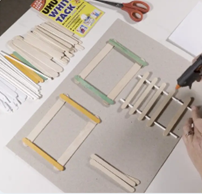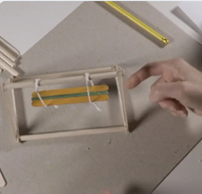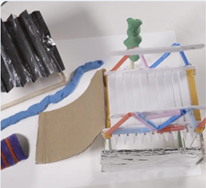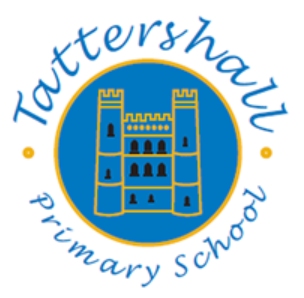Spring 2
Maths
This term the children will be focusing on the following maths skills:
- Calculating percentages of amounts
- Calculating percentage increases and decreases
- Calculating ratio or amounts and shape
- Calculating Area of irregular shapes
- Calculating the volume of simple 3D shapes
- Looking at graphs and charts - reading information and creating them.
Percentages - https://www.bbc.co.uk/bitesize/topics/znjqtfr/articles/zcfyw6f#z4bdxg8
Ratio - https://www.bbc.co.uk/bitesize/topics/zsq7hyc/articles/z8kfnbk#z6vt3qt
English
This term in English, Eagles are finishing off their Tyger narratives. Children have independently written their own 'next chapter' of the story - writing in the style of S F Said. They have focused on including a variety of writing techniques such as:
- similes
- metaphors
- pathetic fallacy
- personification
- expanded noun phrases
- model verbs
- powerful adjectives
- relative clauses
Our next writing topic is based around the picture book 'The Arrival' - children will create a short narrative based around the pictures in this story book.

Science
This term children will be investigating electricity and circuits. Through various investigations children will understand how the amount of batteries/cells and change the brightness of bulbs in a circuit, but also how a the number of bulbs in a circuit can change the brightness if there is not enough voltage. The will learn what a conductor and a resistor is and how they work in a circuit and with a home or building to make sure that the circuits are safe and that all the components work effectively and reliably.
Pupils who are secure will be able to:
- Describe the function of key electrical components and explain how the models used in the lesson represent these.
- Correctly predict if an electrical circuit will work or not, explaining why using their knowledge of complete loops, power sources and presence of components.
- Describe the relationship between the number of bulbs in a circuit, the bulb brightness and the amount of resistance.
- Explain that increasing the number of components increases the resistance, affecting the flow of current and energy transferred.
- Identify that batteries are a voltage source; they come in different voltages, affecting bulb brightness.
- Describe that voltage can be changed using different numbers of cells in a circuit and that more cells or a higher voltage causes brighter bulbs.
- Use the relationship between voltage and bulbs to predict what will happen with buzzers and motors.
- Build an electrical circuit with a switch to control its function, explain how the switch and the electrical circuit solve the problem and recall different examples of problems that can be solved using an electrical circuit.
When working scientifically, pupils who are secure will be able to:
- Draw circuit diagrams with straight lines and using standard circuit symbols.
- Design a results table with an appropriate number of columns and headings with units.
- Identify the changed, measured and control variables in an enquiry to plan a method.
Design and Technology
In Design and Technology, the children are going to design, create and build model structures for a playground. Children will have to think about what apparatus they would like in their playground and the purpose of each piece of equipment; what age range the equipment is designed for and making sure that there is something for all. They will then create their structures using a range of materials - making sure they are free-standing, strong and work for purpose.
Key skills
- Designing a playground featuring a variety of different structures, giving consideration to how the structures will be used.
- Considering effective and ineffective designs.
- Building a range of play apparatus structures drawing upon new and prior knowledge of structures.
- Measuring, marking and cutting wood to create a range of structures.
- Using a range of materials to reinforce and add decoration to structures.
- Improving a design plan based on peer evaluation.
- Testing and adapting a design to improve it as it is developed.
- Identifying what makes a successful structure.
Key knowledge
- To know that structures can be strengthened by manipulating materials and shapes.
- To understand what a ‘footprint plan’ is.
- To understand that in the real world, design can impact users in positive and negative ways.
- To know that a prototype is a cheap model to test a design idea.
Key vocabulary
apparatus
design criteria
equipment
playground
landscape features
cladding



History
This term the children are going to be learning about the History of the Census - dating all the way back to William the Conqueror in 1086 to modern day. The children will write a non-chronological report about the Census, explaining what it is, how it came about, and what it tells us about the population.
Pupils who are secure will be able to:
- Identify the type of information the census gives about people.
- Use the census to make inferences about people from the past.
- Create questions about Victorian working conditions and the thoughts and feelings of a Victorian working child.
- Identify and describe the changes between periods of time using the census.
- Use other primary and secondary sources to verify the data in a census.
- Use a range of sources, including the census, to build an understanding of a period.
- Describe the changes in the 1921 census.
- Plan a local history enquiry using the census.
Computing
Big Data 1 refers to the use of transferring data from one location to another. Children will gain an understanding of how QR codes can be used to show information, transfer data or take an individual to a specific website. We will also learn about barcodes and how businesses can use these for stock information, pricing and product monitoring. We will also discuss devices like card readers, Applepay, contactless payment, scanners and RFID.
Pupils who are secure will be able to:
- Understand why barcodes and QR codes were created.
- Create (and scan) their own QR code using a QR code generator website.
- Explain how infrared can be used to transmit a Boolean type signal.
- Explain how RFID works, recall a use of RFID chips, and type formulas into spreadsheets.
- Take real-time data and enter it effectively into a spreadsheet.
- Presenting the data collected as an answer to a question.
- Recognising the value of analysing real-time data.
- Analyse and evaluate transport data and consider how this provides a useful service to commuters.
PSHE - Citizenship
Pupils who are secure will be able to:
- Understand that education is a human right and why education is important.
- Understand some environmental issues relating to food and food production.
- Understand the importance of caring for others and that we all have a responsibility to care for things and people around us.
- Understand what prejudice and discrimination are and why and how they should be challenged.
- Understand the value of diversity in society, including significant individuals. Understand the roles and responsibilities of people in government.
Religious Education
Why is there suffering? (Part 1)
Children are going to be looking at the philosophical question of 'Why is there suffering?
Through discussions and readings of various texts, scriptures and watching videos, children will create arguments for and against the reasons for suffering around the world, the fairness or unfairness of this and why other people and religions might think differently about suffering.
Pupils who are secure will be able to:
- Make links between the creation story in Genesis and the concept of suffering.
- Suggest some ideas as to why suffering exists in the world.
- Discuss passages from Genesis that relate to free will, demonstrating an understanding of context.
- Identify different reasons why humans may make choices that cause suffering.
- Relate stories such as Adam and Eve’s choice in Genesis, Jesus’ temptation and concepts from other religions to the theme of human wrongdoing and suffering.
- Draw connections between stories from scripture.
- Understand the different perspectives on suffering and divine intervention presented in these stories from scripture.
- Explain why some people turn to prayer during times of suffering.
- Make connections between teachings about Jesus and how some Christians view and respond to suffering.
- Use scripture and personal responses to support their understanding.
